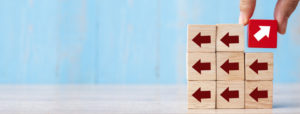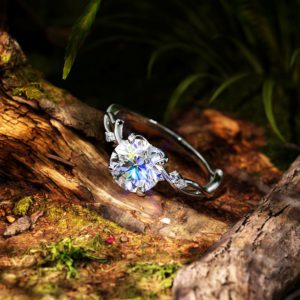
In recent years, retro calculators have made a surprising comeback—not just as functional tools but as stylish desk decor. From vintage-inspired designs to classic models like the Texas Instruments TI-83 or the Casio fx-7000G, these nostalgic gadgets are popping up in home offices, workspaces, and even social media aesthetics. But why are these old-school calculators suddenly in demand as decorative pieces? Let’s explore the reasons behind this growing trend.
1. Nostalgia and Vintage Appeal
One of the biggest drivers behind the retro calculator trend is nostalgia. Many professionals, creatives, and tech enthusiasts who grew up in the ’80s, ’90s, and early 2000s have fond memories of using these devices in school or early careers. The distinct buttons, LED or LCD displays, and chunky designs evoke a sense of simpler times before smartphones took over every computational task.
For millennials and Gen Xers, displaying a retro calculator is a way to reconnect with their past while adding a touch of personality to their workspace. The aesthetic of these devices—often featuring bold colors, metallic finishes, or minimalist designs—fits perfectly with the broader resurgence of vintage tech decor, such as rotary phones and analog clocks.
2. Aesthetic Minimalism and Functional Decor
Modern workspaces increasingly embrace minimalism, where every item on a desk serves both a functional and decorative purpose. Retro calculators fit this trend perfectly—they’re practical (unlike purely ornamental decor) but also visually interesting.
Unlike sleek, modern calculators that blend into the background, vintage models have a unique charm. Their bulky frames, textured keypads, and retro fonts make them stand out as statement pieces. Some popular models, like the Braun ET66 (designed by Dieter Rams) or the Hewlett-Packard HP-12C, are celebrated for their timeless industrial design, making them ideal for those who appreciate mid-century modern aesthetics.
3. The Anti-Digital Movement
As people spend more time on screens, there’s a growing desire to disconnect—even in small ways. A retro calculator offers a tactile, distraction-free alternative to smartphone apps or computer-based calculators. The physical buttons provide satisfying feedback, and the lack of internet connectivity ensures focus, making them a subtle nod to the “slow tech” movement.
For creatives and professionals who want to reduce digital dependency, keeping a retro calculator on the desk is both a practical tool and a symbolic rejection of constant screen time.
4. Collectibility and Rarity
Just like vinyl records or vintage cameras, certain retro calculators have become collector’s items. Limited-edition models, discontinued designs, or calculators tied to historical tech milestones (like the first graphing calculators) are now sought after. Enthusiasts scour eBay, thrift stores, and estate sales to find rare models, turning their desks into mini tech museums.
Some iconic calculators, such as the Curta mechanical calculator or the Soviet-era Elektronika MK-52, are prized for their engineering and historical significance. Owning one isn’t just about utility—it’s about appreciating the evolution of technology.
5. Social Media and Desk Aesthetics
The rise of #WorkspaceInspiration and #DeskSetup trends on platforms like Instagram, TikTok, and Pinterest has fueled the popularity of retro calculators. A well-styled desk often features a mix of analog tools, plants, and vintage accessories—and a retro calculator fits right in.
Content creators and influencers showcase these devices as part of “old-school cool” aesthetics, driving demand among followers who want to replicate the look. The visual appeal of a brightly colored calculator next to a leather notebook or a mechanical keyboard makes for highly shareable content.
6. Practicality Meets Personality
Unlike other vintage items that may just sit on a shelf, retro calculators are still useful. Whether for quick math, financial calculations, or programming, they serve a real function while adding character to a workspace. For designers, engineers, and writers, they offer a blend of utility and style that few other desk accessories can match.
Conclusion
Retro calculators are more than just relics of the past—they’re symbols of nostalgia, design appreciation, and a desire for tangible, distraction-free tools. As workspaces become more personalized, these vintage gadgets offer a perfect mix of function and aesthetic charm. Whether you’re a collector, a minimalist, or just someone who loves a touch of nostalgia, a retro calculator might be the perfect addition to your desk.
Here are some helpful resources to explore :
https://uggaustraliasalenet.com/
https://francemedianews.com/
https://autofans.us/
https://travellingtrailer.com/
https://kumpulanbandarpoker.org/
https://bartonunited.co.uk/
https://farianews.com/
https://evemed.co.uk/
https://thecbdstoreonline.com/
https://nixsmate.com/
https://newsoaxaca.com/
https://mrfinancechallenge.com/
https://destinationovertornea.org/
https://fallenandflawed.com/
https://micanet.net/
https://roverpolo.org/
https://tamava.org/
https://isleuthhound.com/
https://nodalpoint.net/
https://keralanewsnow.com/
https://nr-7releases.com/
https://nkhomegroup.com/
https://truenewsd.com/
https://humaswonogirinews.org/
https://swisscartier.co.uk/
https://luellemag.com/
https://sammatson.net/
https://wesserblog.co.uk/
https://legalkushfly.com/
https://bzahomestylecrafts.com/



